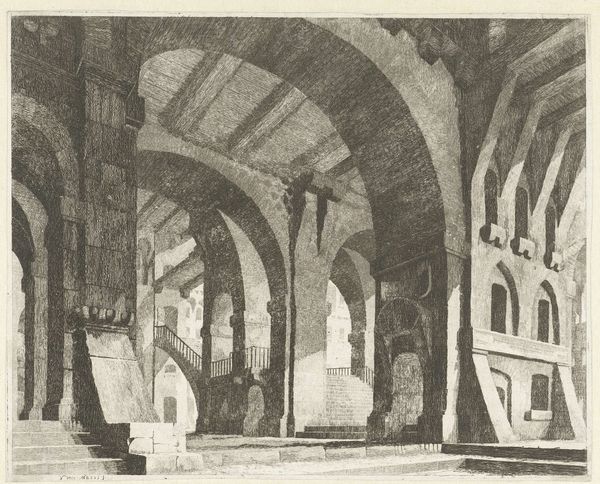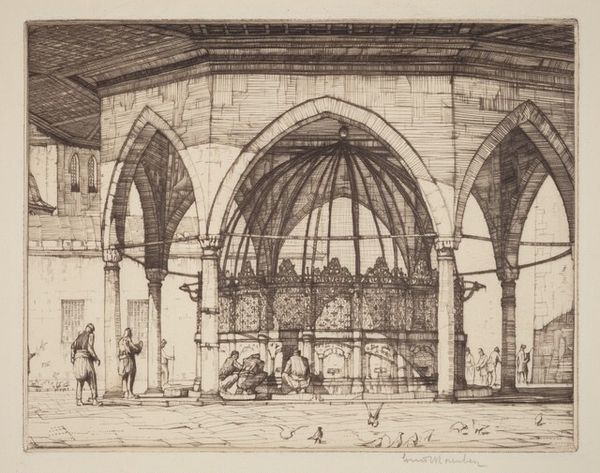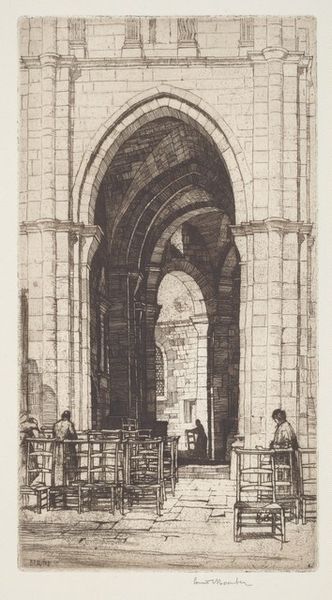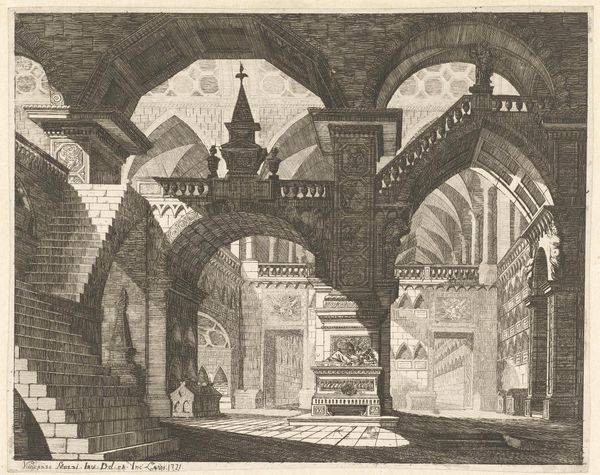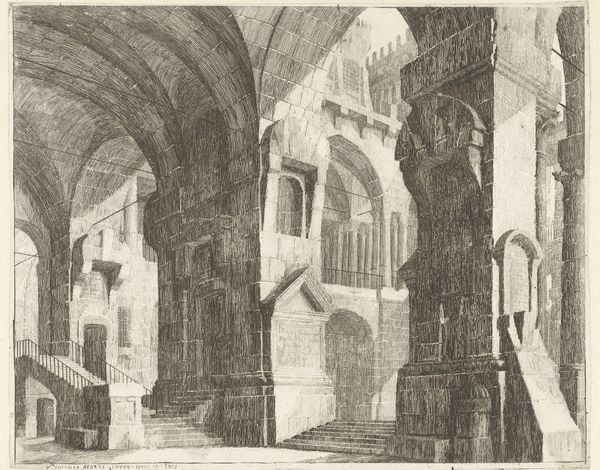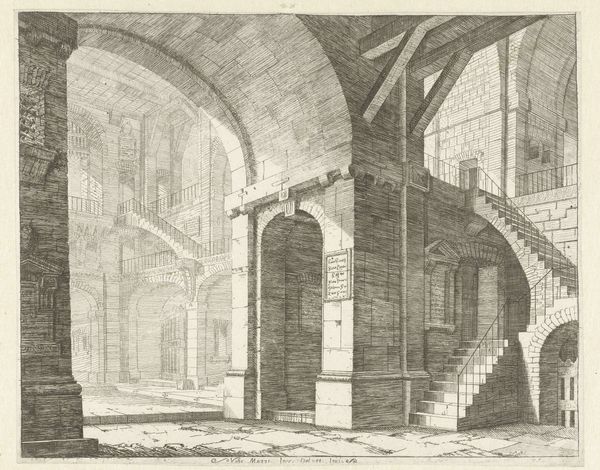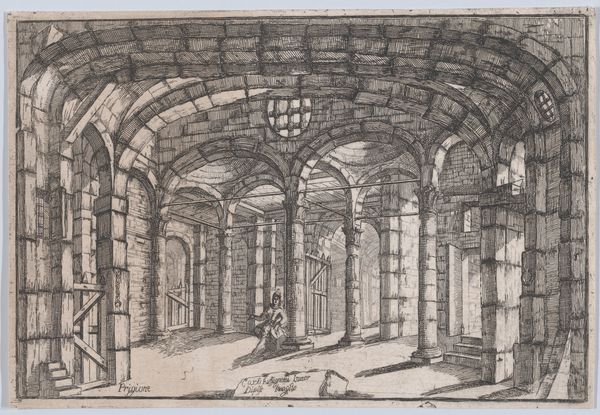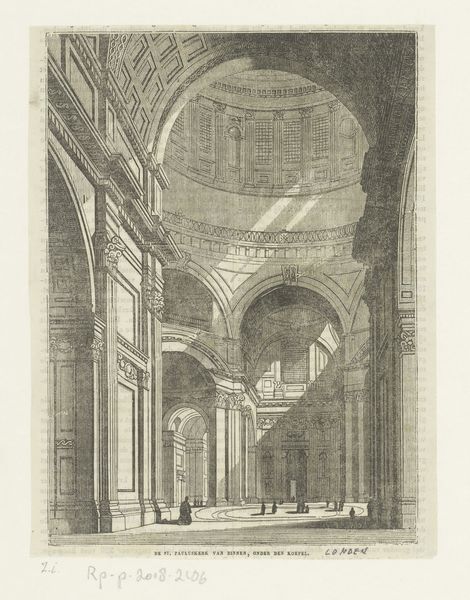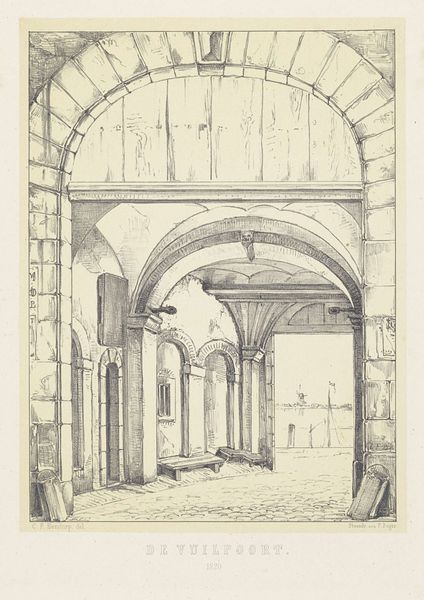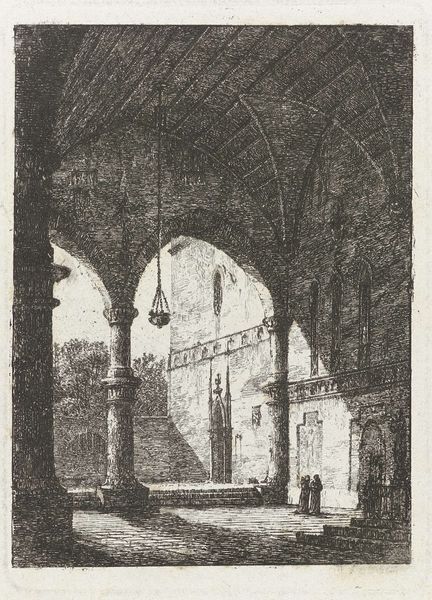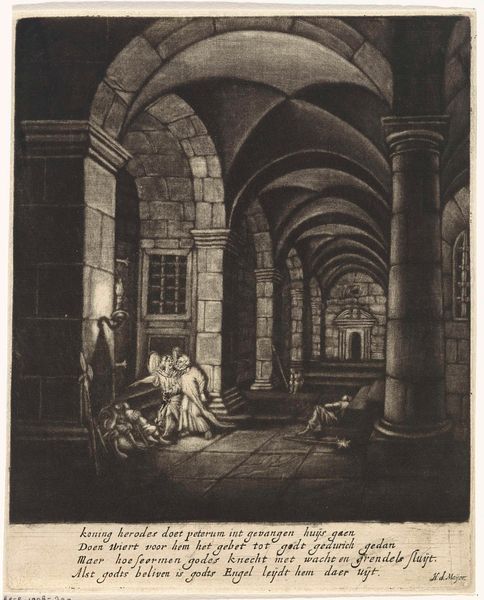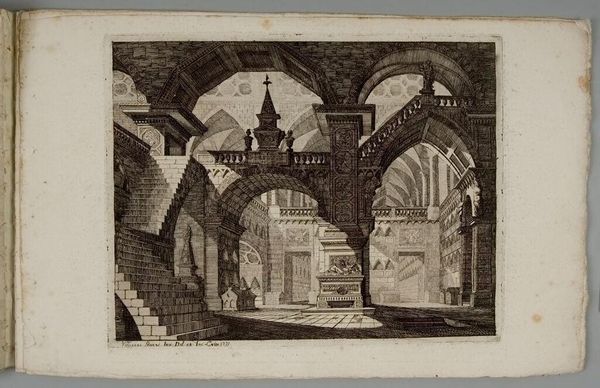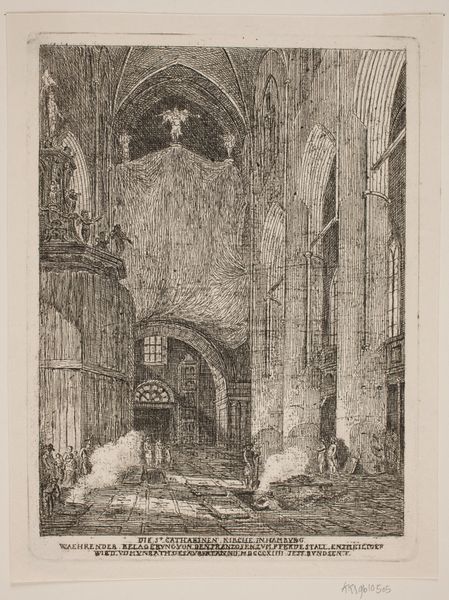
drawing, print, ink, architecture
#
pencil drawn
#
drawing
# print
#
perspective
#
ink
#
geometric
#
line
#
cityscape
#
islamic-art
#
architecture
Copyright: National Gallery of Art: CC0 1.0
Curator: This print, created by Louis Conrad Rosenberg in 1927, captures the interior of the Mosque of Sultan Bayazid in Constantinople. Editor: It's immediately striking—a confluence of heavy geometries softened by light. The meticulous line work almost vibrates with a kind of subdued energy. Curator: Rosenberg’s strategic use of line does create a powerful illusion of depth, doesn't it? The architecture becomes almost tactile, inviting scrutiny. The meticulous detail in rendering the stonework and the geometric patterns highlights his proficiency with printmaking. Note how the composition directs your gaze upward, emphasizing the grand scale. Editor: Exactly! The upward perspective lends it this aura of seeking something beyond the physical space. But I'm drawn to the people positioned at the entrance; they feel almost incidental yet so crucial. Their presence really activates the implied politics of spatial control and who is permitted to enter and gather in this sanctuary. Curator: Interesting point. You bring attention to the dialogue between architecture and human figures, and I appreciate that. But consider also the recurring motif of the arch. It’s an archetypal form lending a sense of continuity throughout Islamic architectural history. I think Rosenberg captures that brilliantly. Editor: Of course, and I appreciate his visual skill! But isn’t it equally valid to note that religious structures like this often reflect and reinforce power dynamics, consciously or otherwise? Architecture is never politically neutral, right? These aren't merely pretty shapes; they also demarcate social spaces and expectations of behaviour within those spaces. Curator: I concede your broader context, but look closely at the technique and the execution of it! It’s Rosenberg's formalist arrangement that guides the viewer toward such reflections to begin with, I should think. Editor: And those formal elements, viewed from another angle, are rife with ideological tension. To me, that friction is compelling! Curator: Indeed. Editor: Definitely a fascinating space evoked by the artist, giving rise to all manner of compelling conversations!
Comments
No comments
Be the first to comment and join the conversation on the ultimate creative platform.
